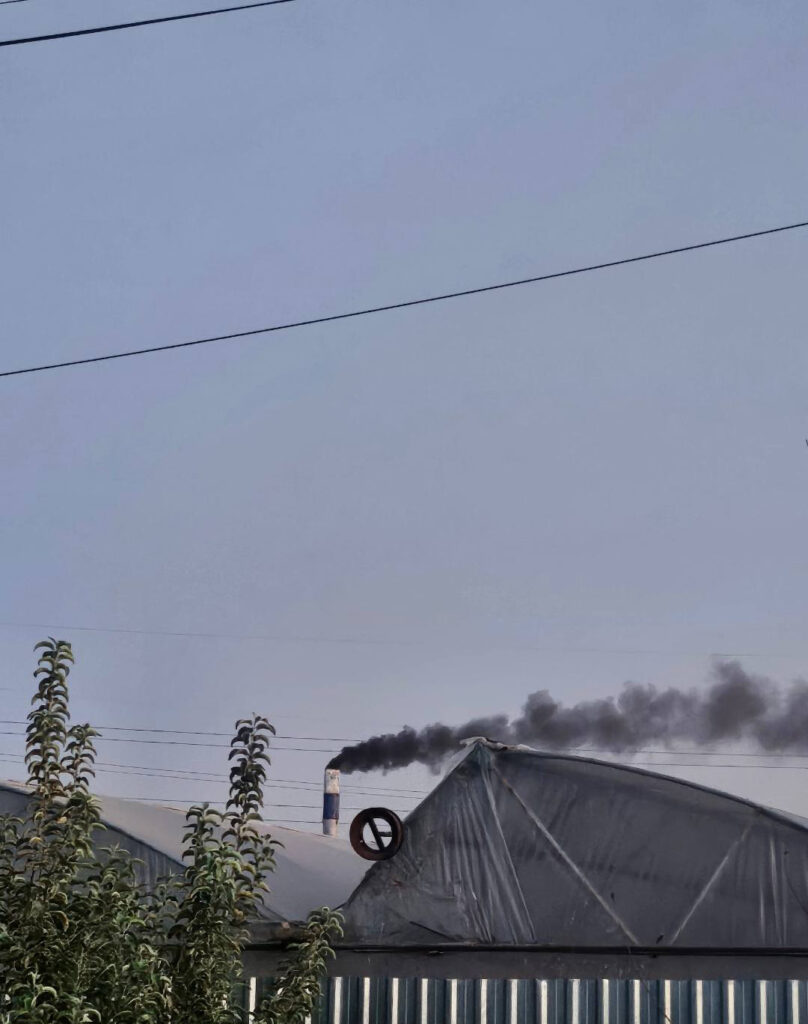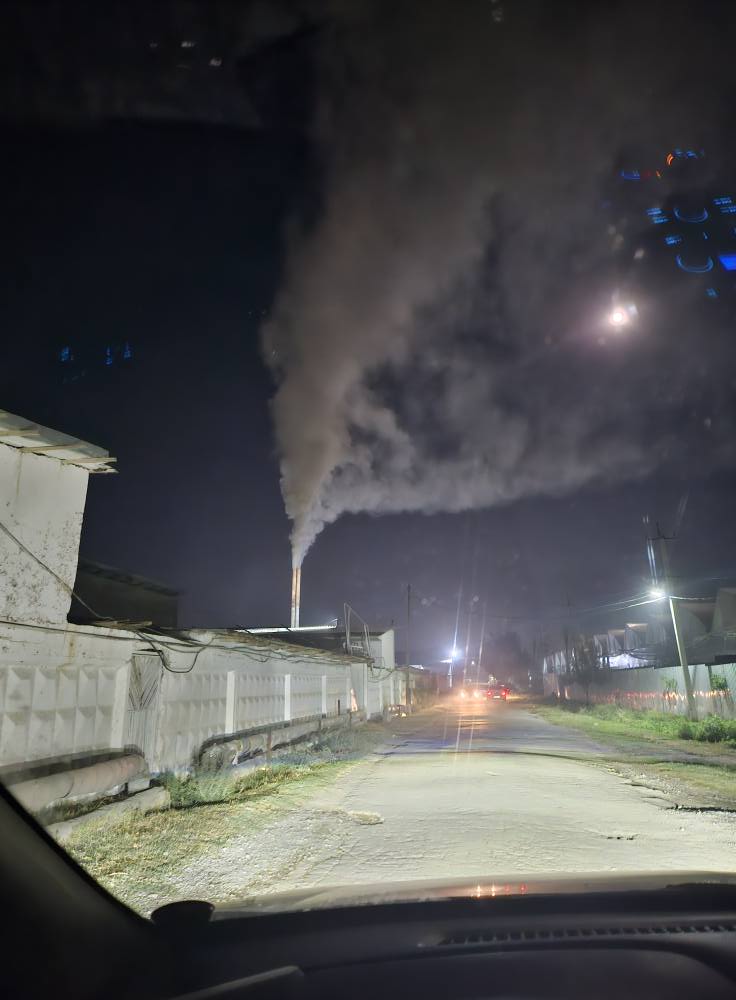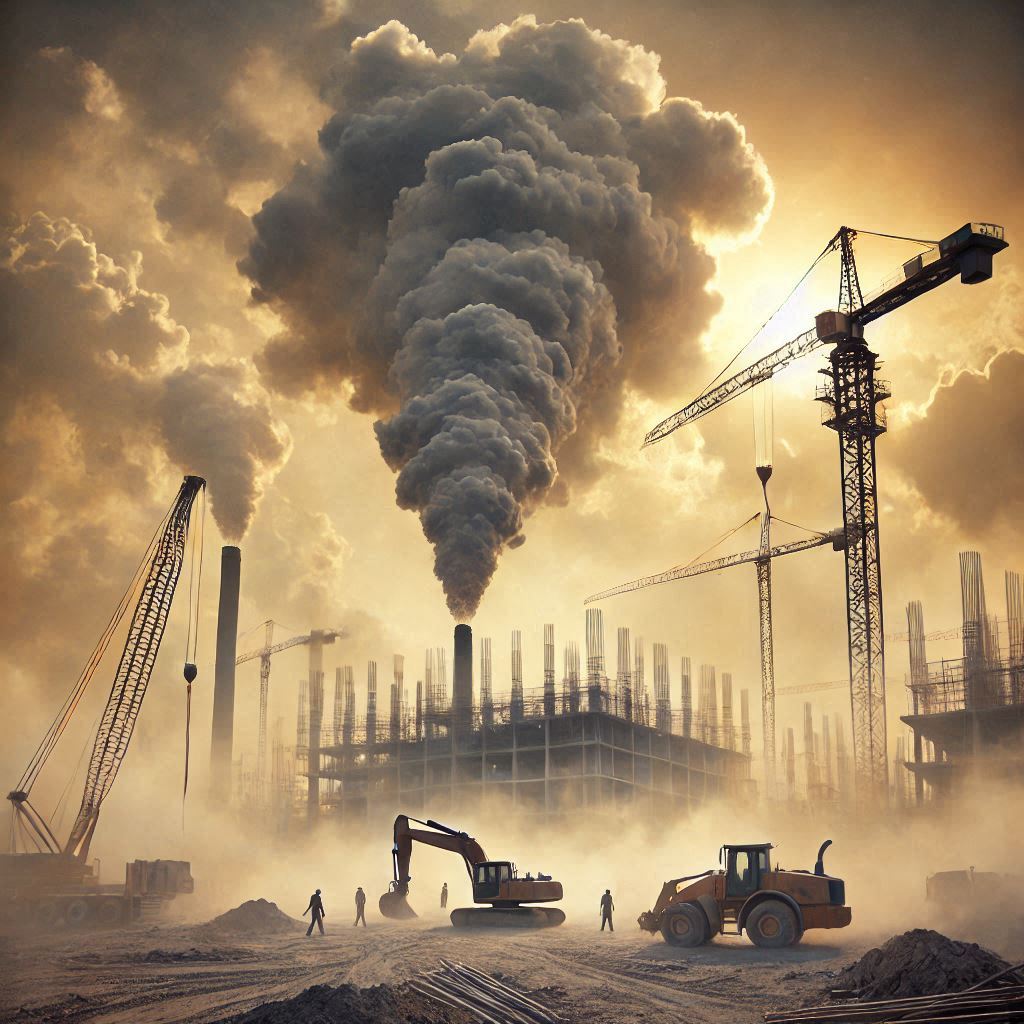This article is also available in:
Русский (Russian)
Uzbek
As the cold season sets in, the air pollution situation in Tashkent caused by greenhouses is worsening. Photos of black smoke coming from greenhouses have surfaced online once again, this time shared by a resident of the capital in the “Consumer.uz” community. The most frustrating aspect is that this is happening amid promises from the authorities to address the issue and compel greenhouses to install modern filtering equipment.

Residents’ complaints: The air is becoming unbearable
“Good evening, everyone. Lately, I’ve noticed banners along the roads about some Environmental Party. Maybe someone from them is in this group and will decide to take action. In the Faravon mahalla near TashGRES, this is what we face every day and night. The smog is indescribable. It covers the nearby areas because it smokes all night. There are four such locations. I’m not against having tomatoes in the winter or flowers in the fall, but my family’s health is more important,” wrote one user.
Another resident added: “It even reaches Chilanzar and Katartal. In the evening, it’s scary to look at the streetlights. It feels like all the ecologists and prosecutors live in a different city and don’t breathe this air. The problem can be solved in 24 hours, but apparently, fines are more important than our lungs. You pay — and keep burning, because all of this is paid off by the sale of tomatoes and flowers.”
Why are greenhouses polluting the air?
The air pollution problem from greenhouses arises from their heating methods. Many greenhouses, especially in the suburban areas of Tashkent, use coal, mazut (fuel oil), or even burn old tires. When these materials burn, they release harmful substances into the atmosphere: carbon dioxide, sulfur oxides, nitrogen oxides, and soot.
Greenhouses use this fuel for heating because it is significantly cheaper than gas or electricity. As a result, black smoke rises from the greenhouses, poisoning the air and harming the health of people living near these facilities. The issue is that switching to more environmentally friendly sources of heat, such as natural gas, is often financially unfeasible for greenhouse owners. Even those who can afford “blue fuel” understand that it could be cut off at any moment, and all the plants in the greenhouse would die. Consequently, they continue to rely on cheap but harmful fuels.
How can we combat greenhouse pollution?
- Transition to environmentally friendly energy sources. One of the most effective ways to reduce pollution is to replace coal and mazut with cleaner energy sources, such as gas or electricity. However, many entrepreneurs are not willing to bear the additional costs of such modernization, which leads to the continued use of harmful technologies.
- Strict control and regular inspections. It is necessary to tighten control over greenhouses and conduct regular inspections of their operations. Fines for using dirty technologies should be raised to a level where it becomes more cost-effective for greenhouse owners to modernize their equipment rather than pay penalties for violations.
- Government support for modernization. Introducing subsidies or low-interest loans for entrepreneurs willing to switch to eco-friendly heating systems could serve as an incentive to abandon outdated and dangerous methods.
- Increased oversight by environmental authorities. Local authorities should create special teams to monitor the operations of greenhouses. This would allow for the timely identification of pollution sources and prompt action to address them.
- Public activism. Residents of affected areas should actively reach out to local authorities and demand improvements. Social media and communities like “Consumer.uz” are already playing an important role in raising awareness of this issue, but real change requires continued pressure on both authorities and entrepreneurs.
Overall, the problem of air pollution from greenhouses requires a comprehensive approach and strict measures. It is clear that fines alone will not solve the problem.
The article may contain inaccuracies as it is translated by AI. For more details, please refer to the Russian version of the article. If you notice any inaccuracies, you can send corrections via the Telegram bot: Uzvaibik_bot.


